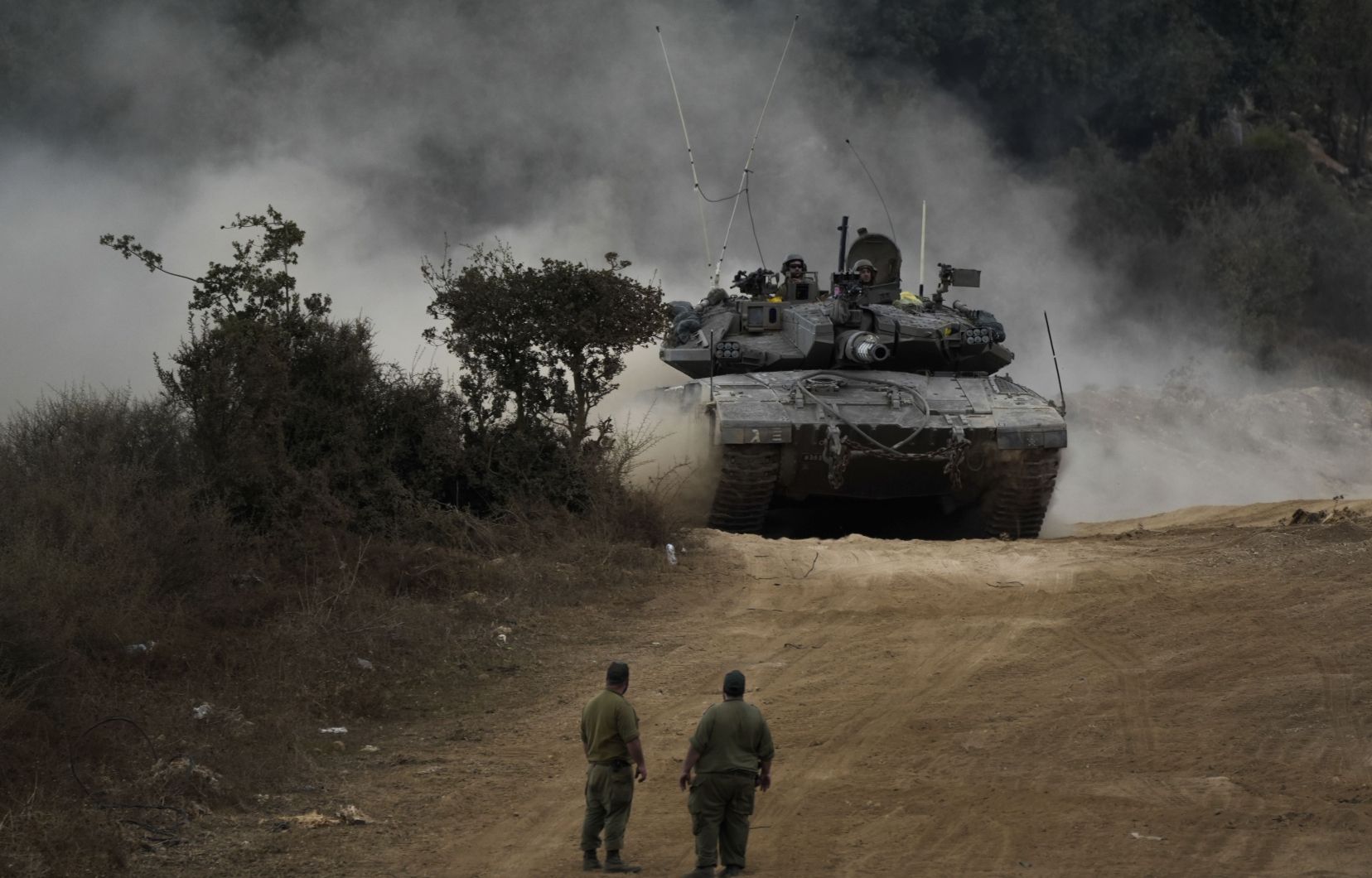How is the Israeli military operation in Lebanon structured? After launching an intensive bombing campaign in the south of this Arab country, the Jewish state then carried out a ground invasion of the territory last week. Difficult to determine, however, the directives guiding these actions or the continuation of things, experts believe.
According to Israel, the primary intention behind its military operations – land and air – is to weaken Hezbollah, present in southern Lebanon. Looking at data from the Institute for the Study of War (ISW), a think tank based in Washington, we actually see that the majority of missiles and artillery fire launched by Israel mainly target the south of the neighboring country. .
In the interactive map below, we can see in particular a concentration of red dots (representing Israeli strikes) in the governorates of South Lebanon and Nabatieh. It is especially in these regions that the Israeli army has issued evacuation notices for the civilian population. However, we can see a quantity of shooting in the suburbs of Beirut, but also in the east of the country.
“Israel claims to target Hezbollah’s strategic points,” explains Rex Brynen, professor in the Department of Political Science at McGill University. “Part of them is located precisely in the Bekaa plain; this region also has a large Shiite population,” adds the Middle East expert.
“Hezbollah preserves a lot of military equipment and parts of its network in eastern Lebanon,” says Nicholas Carl, a researcher at the Critical Threats Project of the American Enterprise Institute, a conservative American think tank. . The Critical Threats Project, which partners with ISW, focuses on studying organizations that the United States considers its enemy.
An uncertain sequel
For the Israeli army, the priority is “to ensure the return of their civilians to northern communities [de son] country”, an area particularly affected by Hezbollah missile fire, explains Mr. Carl. “This is a clear war objective, coming from Israel. »
The criteria for measuring whether or not this objective has been achieved, however, remain quite vague. “What we risk seeing is a fairly sustained bombing campaign, where [Israël] will try to hit all the targets it finds on its way, analyzes Rex Brynen. But it is difficult to predict what the objective is [d’Israël]in the end. » It is also difficult to determine what the directives are behind the land incursions, he adds.
Nicholas Carl also raises the fact that the army does not seem to have given itself any instructions regarding the current invasion. “The question Israeli leaders must answer is how far they will go before they feel they have accomplished their goals,” he said.
Mr. Brynen of McGill, however, lists a list of very unlikely scenarios: an alliance with militias, like the one between the Israeli army and the South Lebanon Army during the Lebanese civil war, is almost impossible to imagine Today. Even if Hezbollah is not unanimous among the Lebanese, Israel remains perceived as the main aggressor by the vast majority of the population. A direct occupation – or indirect through an alliance – is therefore very unlikely according to him.
Mr. Brynen, however, remains skeptical about Tel Aviv’s long-term motivations. “I don’t think the Israeli forces have a plan. I don’t think they have one for Gaza either,” he says.
Destruction “like in Gaza”?
The damage is already being felt under the marked intensity of the bombings. An analysis of satellite images by Corey Scher, a doctoral candidate at the City University of New York, and Jamon Van Den Hoek, an associate professor of geography at Oregon State University, shows the extent of material damage caused on Lebanese territory.
According to the United Nations, more than 2,000 people have been killed by Israeli bombs in Lebanon since September 23. This toll already exceeds that of the last war between the Hebrew state and Hezbollah, which lasted a little more than a month in 2006. Nearly a million Lebanese left their homes to flee the strikes of recent weeks, according to Agence France-Presse.
As recently as Tuesday, Israeli Prime Minister Benjamin Netanyahu threatened Lebanon with “destruction and [de] suffering like that we see in Gaza” if the country did not “liberate” itself from Hezbollah. The armed group, for its part, said it was “open” to the ceasefire efforts promoted by the Lebanese government.
Professor Rex Brynen, however, believes that Hezbollah will not give up anytime soon, while the Gaza Strip continues to be bombarded daily by Israel. “I find it very difficult to see how Hezbollah, which has demonstrated its support for Gaza for a full year, would suddenly turn around and admit defeat and agree to end its own military operations. »
The conflict, without a solution for the moment, is likely to last “several months”, he said.
